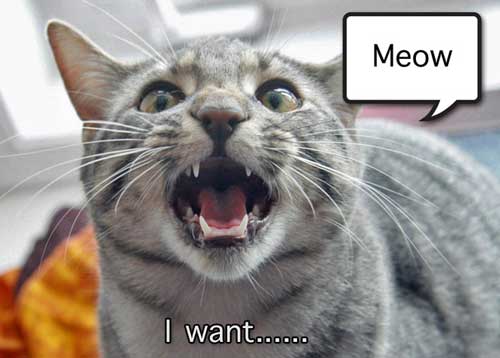
Bradshaw in his book The Domestic Cat: The Biology of Its Behaviour makes the point that the vacalisations of the adult cat are developments “through some combination of culture and genetics” of the kitten mew (meow) which is used to solicit mother’s attention.
Therefore the adult cat has retained some kitten behaviors when communicating with humans – the meow is used to get the attention of human caretaker. This is a form of neoteny (the retention of some juvenile characteristics into adulthood). This is confirmed in the cat’s purr which is also used extensively by the kitten and kneading (usually our legs) which we know now is replicating kittens’ kneading of their “mother’s ventrum” when suckling.
A research survey of zookeepers (Cameron-Beaumont 1997) tells us that adult undomesticated captive cats (I presume these are usually wild cat species) are very unlikely to meow at people. Bradshaw says that this indicates that adult undomesticated species can’t “spontaneously” adapt kitten-type vocalisations in order to interact with people. The meow has to be a development from kittenhood.

Yea me too good article though.
A very good article but I knew that all along. It’s just another example of kittenish traits being extended into adulthood and serving them well. The purring, the kneading with the paws, and dependence on a human care-taker are 3 more examples.
I think it was Dr Morris – “Catwatching” – who first posited this idea. It is just nice to see Bradshaw restate it, confirm it. It is an important bit of science because it tells us that cats see us as mother cats.